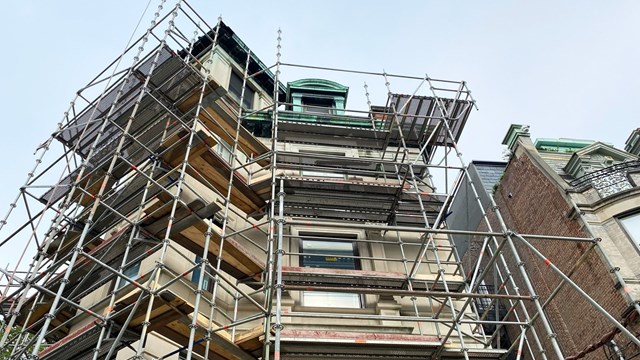The only thing more aggravating than having a pipe burst in your co-op in the middle of the night may be the question of "Who is responsible for the repair?" The proprietary lease generally governs who is responsible, and different leases will have different language. It seems easy, right? Unfortunately, this is not always the case.
Generally, whether a shareholder is liable is dependent on the location of the leaking pipe. This is not always clear-cut, however—and the answer as to whether the shareholder is responsible is sometimes ambiguous. Any ambiguities in the proprietary lease are construed against the corporation, which drafted the lease.
Shareholder or Building Board?
Generally, proprietary leases provide the shareholder is responsible for repair of pipes within the interior four corners of the walls, ceiling or floors of the apartment. The corporation is liable for within the walls, if the issue in question is part of a building-wide system or within the common area. Conflicts may arise where the pipes are attached to fixtures inside the unit or if the shareholder made an installation of some kind inside the walls. Since a co-op involves a landlord/tenant-like relationship, the statutory warranty of habitability also applies. This warranty of habitability cannot be waived by means of the proprietary lease; nor can the Multiple Dwelling Law. If there are three or more residential units in the building, it is a multiple dwelling. For reference, Multiple Dwelling Law Section 78 provides that, "the owner of a multiple dwelling is responsible for keeping the dwelling in good repair."
Who is responsible for a repair? In Goode v. Bay Tower Apartments Corp., a water pipe burst that had been concealed in an apartment wall. The building's pipes were known to be in a deteriorated condition. The building had a history of not attending to routine maintenance. The tenant alleged another pipe burst in her last apartment. So did other pipes in the building. The landlord made repairs after the fact and did not perform routine maintenance. The court found that the co-op had actual notice of the deteriorated condition of the building pipes and constructive notice of the apartment’s deteriorated plumbing. Negligence was found under the doctrine of res ipsa loquitor. Latin for ('the thing speaks for itself'), this gives rise to a permissible inference of negligence, which must be rebutted. There is a presumption of prima facie negligence from the circumstances.
Who Fixes Broken Pipes?
In Dillenberger v. 74 Fifth Avenue Owners Corporation, common area pipes burst causing damage to an adjacent apartment. The proprietary lease required the corporation to maintain, operate and repair the plumbing, heating and sprinkler system, and to maintain the common areas in good repair. The court found the doctrine of res ipsa loquitor to apply, and the shareholder prevailed. Owners are generally responsible for a broken pipe in the common areas, within the exclusive control of the corporation. In Robert Swain v. 383 West Broadway Corp., a steam pipe burst in a storage area. The building owner had constructive notice of the deteriorated condition of the pipes and was responsible based on notice and by res ipsa loquitor.5
In another case, Trousdell Village Owners Corp. v. Gagliardo, a shareholder entered her apartment to be greeted by an apartment full of steam, which buckled her floors and melted her ceiling fan blades. Steaming hot water was gushing from the bathtub spout. The water was turned off and her plumber replaced the shower stem and seat. Could a seat located within a wall, that attached to the stem, be defined as a plumbing fixture that would render the shareholder responsible? Paragraph 18(a) of the lease provided that while the shareholder is responsible for plumbing fixtures inside the apartment, the corporation was responsible for pipes or conduits within the walls. The court found while the stem and seat connected to a faucet within the wall, a defective hot water valve stem was the cause of the leak. As no walls were removed to make the repair, the repair was the shareholder’s responsibility.
Difficult to Interpret Sometimes
In Franklin Apartment Associates, Inc. v. Westbrook Tenants Corp., a shower body affixed to the building and water supply lines could not be accessed without opening the walls. Who was responsible for the repairs? Several apartments in the building had developed leaks in the shower body. Was the shower body a plumbing fixture or equipment under paragraph 18 of the lease, as argued by the corporation. In this instance, there was an ambiguity. This ambiguity required the parties' intent to be ascertained. The shower body was part of the pipes and conduits within the walls, attached to the frames and screwed or soldered onto the water supply line. It was part of the standard building equipment and could not be accessed without opening the walls. This was not a showerhead pressure balanced cartridge, or safe-temp control cartridge in handles.
A shareholder could not reasonably be expected to make repairs requiring the opening of walls, ceilings or floors, which affect the structural integrity or the permanent feature or systems of a building. Accordingly, the corporation was responsible for the repairs. The dissenting opinion in that case laid out the standard succinctly. The proprietary lease provided that the shareholder was responsible for fixture repairs, including exposed pipes (i.e., pipes not within the wall) and the fixtures to which the pipes were attached. The proprietary lease placed corporate responsibility for maintenance and repair of plumbing fixtures within the walls of the apartment. However, the majority opinion was that the leak came from outside the walls.
When the Shareholder is Liable
A shareholder was injured due to a leak in the bathroom faucet. Upon turning the valve, the handle came off and hot water scalded the shareholder. Who was responsible? Was this a plumbing fixture within the wall? The valve stem, seated in the valve body, became unseated and disengaged from the valve body. The stem connected to a piece inside the wall. However, the leak occurred from the faucet valve, which was outside the wall. The shareholder was responsible. Even if the repair been the corporation's responsibility, the shareholder failed to give the corporation timely notice to allow the repair, and the shareholder would, in any event, be responsible.
A shareholder in Giaccio v. 179 Tenants Corp., argued corporate negligence, in addition to other issues. The shareholder contended that heat from a hot water pipe, under the living room, caused the wood subflooring to convert to carbon and spontaneously ignite destroying the apartment. The corporation had no duty to remove the wood floor under the living room to discover the condition caused by the hot water pipe. The corporation was, thus, without actual or constructive notice of a latent defect. As there were no complaints from the shareholder of heat or burning smells emanating from the floor, located above the pipes, or evidence of pyrophoric carbon under the floors in other apartments, the corporation was not negligent. Other issues, nevertheless, remained for trial as there were conflicting reports as to the cause of the fire, including responsibility.
Who was responsible for repair where bubbles on the ceiling caused a portion of the kitchen ceiling to dislodge, hang and fall to the floor? The corporation argued that since the bubbling was not caused by leaks from common pipes, the repair was the shareholder’s responsibility. The cause was a defective bonding agent. The defective bonding agent, which attached the plaster to the beams and supports, never properly adhered and was part of the underlying structure of the building. The corporation, under the lease, was obligated for the foundation, common areas and structural aspects of the building. While these terms were not defined, ambiguities are construed against the drafter and the corporation was responsible. corporations are, likewise, subject to the warranty of habitability, a statute that provides the premises leased must be fit for human habitation and the occupant must not be subject to conditions that are dangerous, hazardous or detrimental to life, health or safety.
Robert Silversmith, Esq. is principal and founder of Manhattan-based Robert Silversmith & Associates Law Firm, PLLC.







2 Comments
Leave a Comment